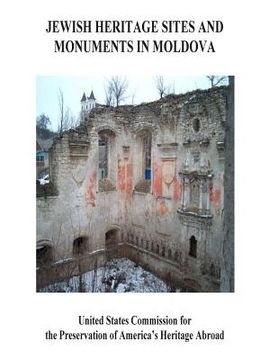Synopsis "Jewish Heritage Site and Monuments in Moldova (in English)"
This report is written in several sections, the most important of which is the catalogue of places of Jewish heritage sites and the descriptions of those sites. Place names are generally given in Moldovan. Russian remains a commonly spoken language in Moldova. In this report, alternate names in Russian are frequently given, especially when the places in question are well known by those names. Street names are usually still given in Russian, as Russian remains most commonly used in street designations. All places visited for this survey are listed with basic information in a table on page 9. With the exception of sites in the capital, Chisinau (Kishinev), which is listed first, sites are described in alphabetical order. Districts or regions (raioane, singular raion) of which there are 32 in Moldova -are provided to help locate smaller sites. Moldova also has three municipalities (Balti, Chisinau, and Tighina) and two autonomous regions (Gagauzia and Transnistria) which have their own legal status. In addition, the status of Transnistria is unresolved. This large territory east of the Dniester River is recognized by the international community as part of Moldova. It is not, however, under the control of the central government but is administered by a breakaway authority known as the Pridnestrovian Moldovan Republic. This report describes over 100 known Jewish and Holocaust-related historic or religious sites in Moldova, the result of research and site visitation undertaken during a 12-month period in 2003-2004. While it is believed that this is the largest and most detailed list of sites yet compiled, it is recognized that the survey is not a comprehensive inventory of all such places throughout Moldova. Further research in years to come will continue to expand this list through the rediscovery of important cultural sites and monuments. Some Hebrew and specialized terms are used in this report, but the meaning of these is made clear in the context of the phrase. When considering cemeteries, it is important to remember that for Jews the burial is sacred, not the grave marker. Thus, even when gravestones have been removed from a cemetery, assuming human remains are still buried in graves, the site remains sacred for Jews, and is required to be protected and inviolate. A cemetery where only a few gravestones are visible still may be the resting place of hundreds of Jews. Also, when describing cemeteries, we have used the term "gravestone," to denote any kind of grave marker whether it consists of a single stone or more. This corresponds to the Hebrew matzevah. While these are often referred to as tombstones, this is not accurate as Jewish law requires burial in graves not tombs. Occasional, there are tomb-like structures in cemeteries, sometimes marking graves. In these cases, too, the body is buried below ground according to Jewish religious law. Generally, in the second half of the 19th century in Moldova as elsewhere, Jewish gravestones often became more and more elaborate, so they in essence became monuments of complex design or at least more complex than the traditional single stone set upright at the head of the grave (Ashenazi custom), or a single slab laid flat over the grave (Sephardi custom).

